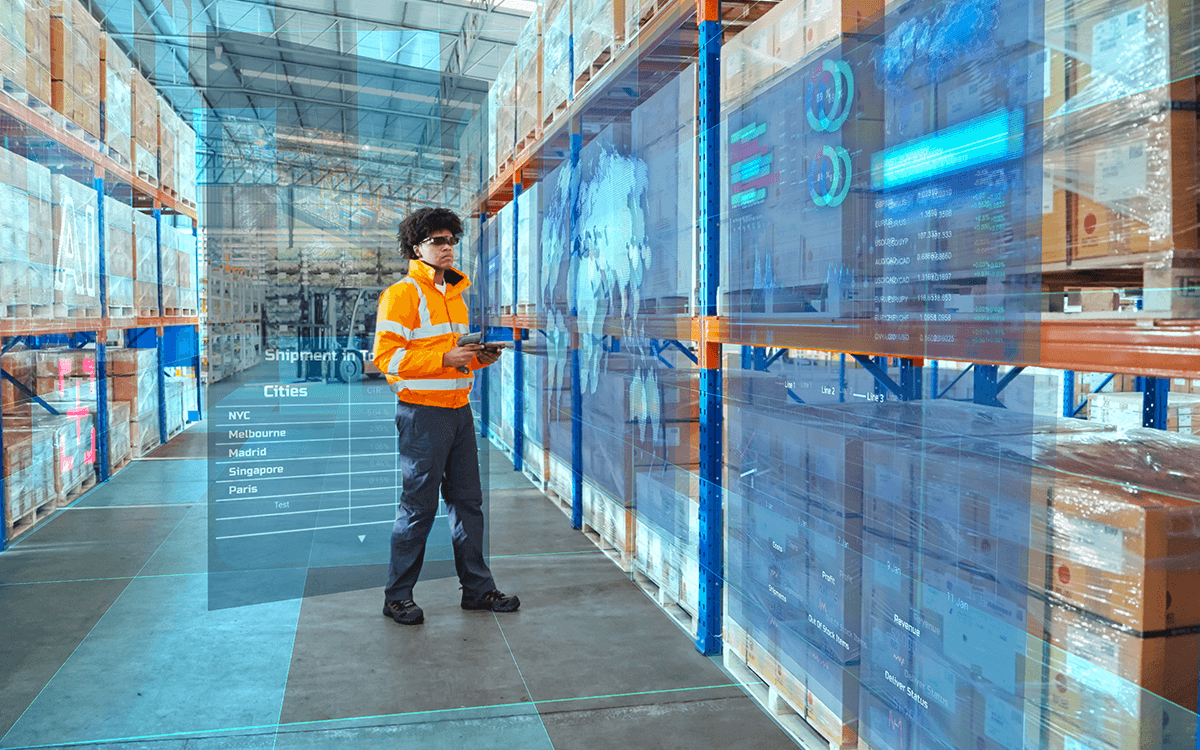How smarter buildings management can solve efficiency problems
Fujitsu / January 10, 2024
It’s no secret that demands on the world’s energy are significant. With growing populations, increasing requirements, and geopolitical factors like the invasion of Ukraine – not to mention the need to decarbonize, the pressure on global energy supplies is unprecedented. All of these factors have inevitably led to rapid inflation and significant price rises, and not just for energy itself either.
Inevitably, organizations end up feeling the strain of these price rises. And that puts pressure onto COOs to limit expenditure and maximize efficiency. In turn the COO puts pressure on facilities and energy managers to demonstrate cost savings as quickly as possible.
Of course, these aren’t the only challenges they face. There’s a focus on reducing energy usage, cleaning up energy supplies, and managing the complexities of multiple disconnected Building Management Systems (BMS). And with sustainability also jumping its way up the priority list ever faster, an organization’s environmental efforts are under increasing public scrutiny.
However, this presents an opportunity for an organization to lower energy bills and boost environmental credentials at the same time. Yet many simply don’t have the visibility required to properly monitor or manage the reduction of energy in their buildings efficiently. Without that, making efficiency gains is difficult.
Smart building solutions from Fujitsu are designed to overcome many technological barriers modern organizations face. With each system developed in partnership with the customer, they can deliver everything from better insights into where energy is being used, to automated systems that limit any wastage. All through increased visibility, reliability, and control.
Energy needs have changed
Since the pandemic, most organizations have faced a fundamental shift in how they work. Most business premises were set up to support a consistently present workforce. This meant that, while motion-sensitive lighting has been standard for a while, air conditioning and other functions were set to be turned on at all times – and in some cases overnight. That way, it would always be a comfortable working environment without the need for significant daily fluctuation.
However, this has changed. Now, it’s not uncommon for an office to be half-empty on a daily basis. That means heating and cooling a lot of empty space, with separate meeting rooms often being lit and heated, only to not be used by anyone. And because many buildings were equipped back when requirements were consistent and relatively uncomplex, many organizations underinvested in building management systems. Solutions for managing heating and cooling, security, and access were typically procured piecemeal over time from different vendors and were not designed to integrate. They also lacked smart functionality that responded to demand. While lights could turn themselves off, HVAC, for example, could not. The result? Commercial buildings are responsible for 37% of global emissions, with 70% of those emissions coming from inefficient daily use.(*1)
So, what’s the problem? Most organizations have at least eight separate BMS to run their buildings, none of which communicate with each other. It means they don’t create a unified view of what’s going on within the building; data must be collected and reports created manually through each system in turn. And inevitably, that’s quite overwhelming. With so many data points, each with a varying level of relevance and importance, it’s extremely difficult to extract actionable insights, let alone make significant changes. This makes ongoing monitoring of energy use and tracking against targets a challenging and time-consuming job for facilities managers.
In fact, in many incidents, the only way for a facilities manager to investigate an issue or inefficiency is in person. If a system flags up an alert, such as a mechanical failure, it will likely need to be visited and an incident management report manually created. Naturally, this is time inefficient, as well as resource inefficient.
What organizations need, is a dramatically simplified setup. A single dashboard that only shows the key information from each BMS. One that can manage everything they need, plus plenty more. One that can make decisions for them, so they don’t have to constantly be watching eight different systems. As an example, Fujitsu’s AI-enabled solution doesn’t just switch the heating on at set times each day. Instead, it monitors the number of people in the office, where they are, and even the weather and position of the sun in order to make decisions about what needs to be heated, and when. This saves effort, creates a more comfortable environment, and reduces energy use.
(*1)Sixth Carbon Budget, building – UK Climate Change Committee (2020)
Working patterns have shifted
As already mentioned, the shift to a hybrid way of working has fundamentally changed how office space is used. Now, buildings are rarely at maximum capacity, with office attendance fluctuating day to day. As a result, it’s common to waste energy expenditure on unused locations which are set to unilaterally heat, cool, and light. This is especially true for larger offices that have multiple meeting rooms. In this instance, switching from using several rooms in a day to only heating one or two spaces is one way of gaining efficiency without fundamentally changing the infrastructure. It also saves on cleaning too.
And of course, if people are working from the office less frequently, that also means the operations teams looking after the office will also be in less frequently. It’s therefore crucial they have ways to manage the building effectively, wherever they happen to be.
A model for a smarter system
Fujitsu’s Intelligent Building Energy Management solution offers new ways of running an efficient estate. It has a variety of powerful capabilities at its core, all of which can benefit organizations in different ways.
First off, our solution can be used to overcome siloes between different BMS. It does this by creating a digital twin that aggregates data to provide a consolidated dashboard of energy usage, alongside access, security, and other systems. This makes it easier for operations teams to track energy usage in real-time, identify trends, and have decisions made on their behalf, with no need for them to take direct control. This means no more heating systems left running overnight, no more doors left unlocked, and many other benefits.
It also enables facilities managers to see a schematic of their office and get a visual representation of where issues are, saving time on fault-finding. And because Fujitsu’s solution works with 95% of existing BMS, it’s incredibly flexible. Plus, we’re usually able to find a clever way of working in a solution for the 5% our solution doesn’t work with, be it IoT sensors, or anything else we can think of.
While Fujitsu’s solution is not the only one that can provide that visibility, it does uniquely automate actions based on highly advanced AI insights. As it is integrated into the building management system, it can reduce the burden on operations teams by automating the necessary next steps. For example, it could automatically identify a room is getting too cold and turn off the air conditioning, without the need for input from a facilities manager. And that’s just the start. The recommendations and actions that the solution takes are also far more intelligent than users might expect. While identifying a room is too cold is one thing, there’s so much more the system can be used for. It can pair smart insights from various sources – such as how many people are in the office that day – with the ability to make granular changes to energy use in the office space, instead of applying unilateral conditions.
From here, built-in AI identifies areas of the building which are not going to be in use during that day and reduces heating and lighting in those locations automatically. The solution can also make suggestions of how to reduce use further. This could be by ensuring consecutive meetings all take place in the same room, meaning only that room needs to be heated for the meeting and cleaned in the evening. It’s about saving energy through smart usage, rather than expensive upgrades, while also returning up to 15% energy savings.
A solution which pays for itself
While there is always a cost to implementing new technology, the efficiency gains should more than make up for the costs over time. With Fujitsu’s Intelligent Building Energy Management solution, the visibility and control alone allows organizations to save 10-15% of their annual energy bill. This means that, even if no other steps are taken, the investment should pay for itself in a relatively short period of time. If energy prices continue to rise, it’ll only pay for itself quicker, with ROI delivered in approximately a year.
It was also specifically designed for the hybrid working world, which gives users a smarter solution that better support employees, while being more suited to modern efficiency challenges. By automating actions, the solution can act faster to prevent and correct issues, such as uncomfortable working temperatures or faults that cause problems, even if the operations team aren’t in the office that day.
And like most Fujitsu solutions, once you have this infrastructure in place, it becomes easier to use it as a platform to build on. Now, you can add in trash facilities that automatically trigger alerts when they’re 90% full. You could opt for demand planning for canteens, so they know how much food to make. You could add augmented reality wayfinding and visitor tracking facilities. These are just a few of the prospects available when you add Intelligent Building Energy Management on top of your existing BMS setup.
The next step in building management
With AI technology growing in potential by the day, it’s an exciting time for building management. New solutions will rapidly emerge, all with the aim of making commercial buildings more efficient, more fun, more secure, and easier to get to.
So, what’s on the horizon? The possibilities are endless. It could allow for automated communication with the mobile devices of individuals, giving them advice on the best way to travel to a building on a certain day. It could also suggest hotdesks in the building for people to use, based on what they need to do and who they need to work with that day. It could even be used to share special offers for the staff canteen, if such a facility is available.
Beyond these new additions, expect a host of new capabilities that are beyond our current imagination – additional nice-to-have extras you can access using the money saved by boosting efficiency. As new technology emerges, our solution will evolve. And that’s exciting.
Getting started with Intelligent Building Energy Management
Smart, AI-enabled solutions have the potential to fundamentally shift building management, something the industry needs, now that working habits have drastically changed. While in the past, building management could get away with being a little more hands-on and less smart, the increasing pressure of energy prices and sustainability demands, as well as how offices are being used, has brought an end to that era. And with 79% of the buildings that will be standing in 2050 already built, older buildings have no excuse.(*2)
The truth is, modern smart management solutions are relatively simple to implement, very easy to use and capable of significant upgrades. However, you firstly, need to have a solid foundation, that is integrated into your BMSs and a suite of IoT Sensors, that enables you to build upon and secondly you need to be able to build a business case. The substantive energy savings from the Fujitsu solution provides this and of course, offers a simple way of taking a step towards meeting ambitious sustainability goals and cost reduction targets.
To find out more about Fujitsu’s Intelligent Building Energy Management solution, or to register your interest in a proof of concept please contact askfujitsu@fujitsu.com quoting reference 4223.
(*2)Global Alliance for Buildings and Construction, "2020 Global Status Report for Buildings and Construction" (2020)

Editor's Picks












